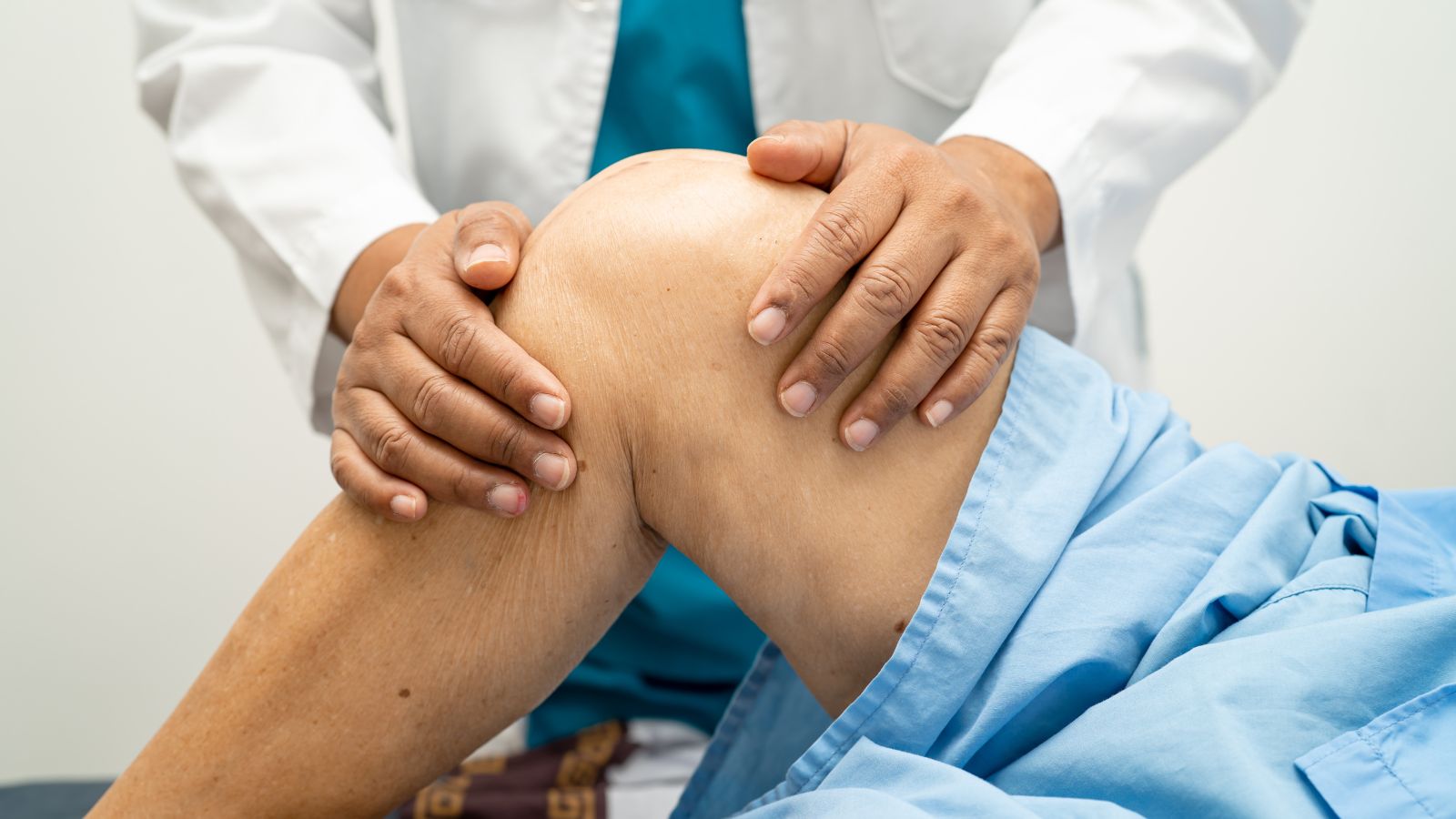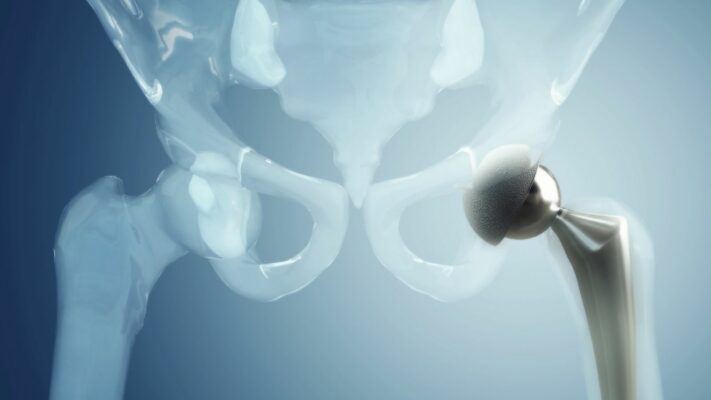Prof. Dr. Murat Demirel, one of the best orthopedic doctors treating knee osteoarthritis in Ankara, stands out with his long-standing experience in the diagnosis and treatment of this condition caused by the gradual wear of the cartilage tissue on the joint surface. Knee osteoarthritis is a common orthopedic problem that seriously affects quality of life with complaints such as restricted movement, pain, and stiffness in the joint. Among the hospitals in Ankara that treat knee osteoarthritis, Prof. Dr. Demirel offers personalized treatment plans tailored to each patient’s stage of disease in centers equipped with advanced medical technology and high hygiene standards.
During the treatment process; modern methods such as medication therapy, physical therapy practices, PRP or stem cell injections, hyaluronic acid applications, and surgical interventions when necessary are used. Following knee osteoarthritis treatment, recovery is ensured to be fast, safe, and permanent with the doctor’s recommendations. In addition, he provides transparent and up-to-date information about knee osteoarthritis treatment prices in Ankara, helping patients make informed decisions. You can also contact immediately to make an appointment in order to protect your knee health, reduce your pain, and increase your freedom of movement.
| Disease Name | Knee Osteoarthritis (Gonarthrosis) |
| Affected Area | Knee joint (femur, tibia, patella joint surfaces) |
| Symptoms | Knee pain, morning stiffness, difficulty climbing stairs, swelling, limited movement, crepitus |
| Diagnostic Methods | Clinical examination, X-ray, MRI |
| Causes | Cartilage degeneration, aging, repetitive microtraumas |
| Risk Factors | Aging, obesity, knee injuries, genetic predisposition, female gender |
| Treatment Methods | Conservative (painkillers, physical therapy, exercise, knee brace use), intra-articular injections (corticosteroid, hyaluronic acid, PRP), surgery (osteotomy, total knee replacement) |
| Surgical Options | Total knee arthroplasty, high tibial osteotomy |
| Complications | Movement limitation, deformity, instability, decreased quality of life |
| Recovery Process | Weeks with conservative treatment; 3–6 months after surgery |
| Prevention Methods | Weight control, strengthening knee-surrounding muscles, joint-friendly exercises |
| Follow-up Process | Regular physical therapy check-ups, treatment adjustments based on patient’s symptoms |


Prof. Dr. Murat Demirel
Orthopedics and Traumatology Specialist
Orthopedics Specialist Prof. Dr. Murat Demirel was born in Ankara in 1974. He completed his primary education at Ankara Kavaklıdere Primary School and his secondary and high school education at Ankara Atatürk Anatolian High School. Dr. Demirel graduated from Ankara University Faculty of Medicine in 1998 and completed his residency in Orthopedics and Traumatology at Ankara Numune Training and Research Hospital, 1st Orthopedics and Traumatology Clinic, in 2004.
PhD
Ankara University Institute of Health Sciences
Specialization
Ankara Numune Training and Research Hospital, 1st Orthopedics Clinic
Medical School
Ankara University Faculty of Medicine
Yazı İçeriği
What Is Knee Osteoarthritis and Why Does It Develop?
You can think of the knee joint as a hinge where two bones meet. The ends of these bones are covered with joint cartilage, a smooth, shiny, and slippery tissue. The function of this cartilage is, just like the shock absorbers of a quality car, to absorb shocks that occur during movement and to allow the bones to glide over each other painlessly and without friction. Knee osteoarthritis is the gradual deterioration, thinning, and wearing away of this precious cartilage tissue over time.
This is not just simple “wear and tear”; it is a biological process affecting the entire joint. When the cartilage begins to lose its ability to repair itself, the body tries to heal the damage. However, this repair process is not always perfect. The body tries to stabilize the joint by forming small bony outgrowths, called “osteophytes,” at the edges of the joint. These outgrowths can further restrict joint movement and cause pain. Over time, the cartilage becomes so thin that the underlying bone surfaces begin to rub against each other. This is the real reason behind the deep, aching pain and the cracking sounds heard during movement.
We can basically examine osteoarthritis under two main headings:
Primary Osteoarthritis: This is the most common type. There is no obvious underlying trauma or disease. It usually develops after the age of 50, as a combination of the natural wear of the joints over the years and genetic predisposition.
Secondary Osteoarthritis: In this case, there is a specific cause that triggers the osteoarthritis. A sports injury at a young age, an intra-articular fracture, meniscus or ligament tears, inflammatory joint diseases such as rheumatoid arthritis, or some congenital joint abnormalities can pave the way for osteoarthritis to develop at an earlier age, sometimes even in the 30s or 40s.
So, what are the factors that increase the risk of knee osteoarthritis? While some factors are beyond our control, many can be managed through lifestyle changes:
- Advanced age
- Female gender (especially post-menopause)
- Family history of osteoarthritis (genetic predisposition)
- Excess weight or obesity
- Previous knee injuries (fracture, meniscus tear, ligament rupture)
- Occupations or sports that put repetitive stress on the knees
- Other joint diseases such as rheumatoid arthritis
- Alignment disorders such as “bow legs” (varus) or “knock knees” (valgus)
- Insufficient muscle strength (especially in thigh muscles)
Excess weight is the most important and at the same time the most modifiable risk factor. Every 1 kilogram of excess body weight adds approximately 4 kilograms of extra load to your knees while walking. This means faster deterioration of an already tired joint. Therefore, weight control is the cornerstone of osteoarthritis management.
What Are the Symptoms of Knee Osteoarthritis and When Should Action Be Taken?
The symptoms of knee osteoarthritis usually begin insidiously and gradually worsen over time. Many patients may initially attribute these symptoms to “aging” or “fatigue” and ignore them. However, recognizing these signs early is critical for taking effective measures. The most common symptoms of knee osteoarthritis are:
- Pain
- Stiffness
- Joint noises (crepitus)
- Limited movement
- Swelling
- Tenderness
- Weakness and feeling of instability
Let’s elaborate on these symptoms a bit more. Pain is undoubtedly the most disturbing and the most common symptom that drives patients to seek medical attention. At first, it only appears during activities such as long walks, climbing stairs, or squatting, and subsides with rest. It is usually described as a deep, aching pain. As the disease progresses, even short walks can become painful, and eventually, the pain can occur at rest, even waking the patient at night.
Stiffness, on the other hand, is the difficulty in initiating movement, especially after waking up in the morning or after being inactive for a while, such as during a movie or a long car ride. The knee feels “rusty.” This stiffness usually eases gradually within a few steps or after a few flexion-extension movements of the knee, typically resolving within 30 minutes.
Joint noises, or crepitus, are symptoms that can be quite concerning for patients. It refers to the cracking, grinding, or grating sounds heard while bending the knee. This sound is caused by the roughened cartilage surfaces and bones rubbing against each other. Although not always painful, it is a sign of cartilage damage.
When these symptoms begin to make daily life difficult—such as putting on socks, getting out of a car, or shopping—or when you realize you are avoiding social activities due to pain, or when night pain starts to disturb your sleep, it is time to consult an orthopedic specialist.
How Is Knee Osteoarthritis Diagnosed by a Specialist?
So, what should you expect when you see a doctor? The diagnosis of knee osteoarthritis relies more on the careful assessment of an experienced physician than on technological devices. The process consists of several key steps.
The first and most important step is listening to you. While taking your medical history, we want to know the details of your complaints. Questions such as when and how your pain started, where it is located, what time of day it worsens, and which movements trigger it provide us with the most valuable clues for diagnosis. Information such as whether you have had a previous knee injury, whether anyone in your family has similar complaints, and how much this condition affects your daily life helps us see the full picture.
Then comes a thorough physical examination. During this examination, a series of assessments are performed:
- Observation (Inspection)
- Palpation
- Assessment of range of motion
- Muscle strength testing
- Gait analysis
- Special tests
We usually start by comparing both knees. We look for any swelling, visible deformity (such as bow legs or knock knees), redness, or muscle wasting (atrophy). Then, by palpating your knee, we check for warmth, tender points, and fluid accumulation (effusion) in the joint. We measure how much your knee can bend and straighten to detect movement restrictions. While moving the knee, we try to feel the characteristic crepitus (crackling). Assessing the strength of the thigh’s front and back muscle groups helps us understand how well your joint is supported. Observing your gait allows us to analyze any limping or abnormal walking mechanics.
This clinical evaluation is usually sufficient for diagnosis. However, imaging methods are used to confirm the diagnosis and determine the stage of osteoarthritis. At this point, the most common method is X-ray. An X-ray of the knee taken while standing, i.e., when weight-bearing, provides very valuable information. On X-ray films, we can clearly see the narrowing of the joint space, which indicates cartilage loss, the bony outgrowths (osteophytes) at the edges of the bones, and the advanced-stage findings where the bones have started rubbing against each other.
Magnetic Resonance Imaging (MRI) is not routinely requested for the diagnosis of osteoarthritis. We usually use it in cases where the diagnosis is uncertain or when we suspect another problem, such as a meniscus tear, ligament injury, or bone marrow edema accompanying the osteoarthritis.
Contact us for detailed information and an appointment!
What Are the Non-Surgical Treatment Options for Knee Osteoarthritis?
The answer to the question “What helps knee osteoarthritis?” does not lie in a single magical pill or injection but in a comprehensive treatment plan that combines many different methods applied in a personalized manner. Our goal in knee osteoarthritis treatment is to relieve pain, restore function, and most importantly, improve your quality of life. Surgery is usually considered the last resort. The first step is always non-surgical methods.
Lifestyle and Exercise
These two elements are undoubtedly the most important parts of osteoarthritis management. Medications or injections may temporarily suppress the symptoms, but lifestyle changes address the root of the problem.
Weight Control: If you are overweight, this is the most effective step you can take to start treatment. Losing weight not only reduces the mechanical load on your knees but also decreases the inflammatory molecules secreted by fat tissue that contribute to cartilage damage.
Proper Exercise: You may think, “Exercise with a painful knee?” Absolutely yes! Inactivity creates a vicious cycle of muscle weakening, joint stiffening, and worsening pain. The key word here is “proper” exercise. Instead of high-impact, jumping sports that strain the knee, you should choose joint-friendly activities. Some recommended types of exercise are:
- Swimming
- Water exercises (aqua gym)
- Stationary cycling
- Brisk walking (on soft and flat surfaces)
- Yoga
- Tai Chi
Physical Therapy: A physiotherapist can design a personalized exercise program for your condition. Exercises aimed at strengthening the front (quadriceps), back (hamstrings), and hip muscles create a natural “corset” around the knee joint, reducing the load on the knee. Manual therapy, taping techniques, and various devices (such as TENS) can help with pain control.
Medication Therapies
Medications are used to make life easier, especially during flare-ups when pain becomes more intense.
Painkillers: Simple analgesics such as paracetamol can be tried initially.
Topical Medications: Pain-relieving and anti-inflammatory creams, gels, and sprays applied directly to the knee skin are particularly effective in mild to moderate pain. Since they have fewer systemic side effects, they are a safe option.
Non-Steroidal Anti-Inflammatory Drugs (NSAIDs): This drug group not only relieves pain but also suppresses the intra-articular inflammation (synovitis) that accompanies osteoarthritis. However, because of potential side effects on the stomach, kidneys, and heart, they must be used under medical supervision, at the lowest effective dose, and for the shortest possible time.
Intra-Articular Injections
When oral medications are insufficient or cannot be used due to side effects, injections directly into the knee joint can provide effective relief.
Cortisone Injections: Cortisone is a very strong anti-inflammatory drug. When injected into the joint, it reduces pain quickly and significantly, especially during flare-ups with swelling and heat in the knee. Its effect lasts from several weeks to a few months. However, since frequent repetition can damage the cartilage, it is usually recommended not to exceed 3 times per year.
Hyaluronic Acid (Viscosupplementation): Commonly known as “gel injection” or “rooster comb injection,” this method involves injecting hyaluronic acid, the main component of healthy joint fluid, into the joint. The aim is to restore the lost lubrication and shock absorption of the joint. It is usually administered as several injections at weekly intervals, and its effect can last between 6 months and 1 year.
PRP (Platelet-Rich Plasma): This is a biological treatment method that uses the body’s own healing potential. A small amount of your blood is processed to obtain plasma rich in platelets (repair cells) and growth factors. This plasma is then injected back into your knee joint. The goal is for these growth factors to stimulate cartilage repair and calm the inflammatory environment inside the joint. It offers promising results, especially in early and moderate stages of osteoarthritis.
When Does Knee Osteoarthritis Require Surgical Treatment?
If all non-surgical methods have been tried and your knee pain is so severe that it prevents you from performing daily activities, wakes you up at night, and significantly reduces your quality of life, then surgical treatment becomes an option. There are several different surgical methods for knee osteoarthritis, and the right choice of surgery depends on many factors such as your age, activity expectations, the extent of osteoarthritis, and your leg alignment.
Arthroscopy (Minimally Invasive Surgery): This method has almost no place in the general treatment of knee osteoarthritis anymore. Scientific studies have shown that simply “washing and cleaning” an arthritic knee provides no long-term benefit over placebo surgery. Arthroscopy may be considered only if there is a mechanical problem accompanying osteoarthritis that causes the knee to lock (such as a torn meniscus fragment).
High Tibial Osteotomy (Bone Realignment Surgery): This is a joint-preserving surgery. It is usually suitable for younger, more active patients under 65. It is preferred especially in cases with “bow legs” deformity and osteoarthritis limited to the inner part of the knee. In this procedure, a controlled cut is made in the upper part of the shinbone to correct the leg angle. Thus, the body weight is shifted from the worn inner part of the knee to the healthier outer part. This effectively relieves pain and allows the patient to manage with their own joint for many years, delaying knee replacement surgery.
Partial (Unicompartmental) Knee Replacement: This is also a joint-preserving approach. It is applied when osteoarthritis is limited to just one of the three compartments of the knee (most often the inner compartment). In this surgery, only the damaged part is replaced with a smaller prosthesis instead of replacing the entire knee. Since the healthy ligaments and other compartments are preserved, the knee feels more natural compared to total replacement, and recovery is usually faster.
Total Knee Replacement: This is the gold standard treatment method for advanced and widespread knee osteoarthritis. In this surgery, the worn joint surfaces of the thighbone and shinbone are cut and replaced with an artificial joint composed of metal and a special plastic (polyethylene). Total knee replacement is highly successful in eliminating severe osteoarthritis pain and restoring functions such as walking and climbing stairs. Modern prostheses can last more than 15-20 years, and this surgery provides a revolutionary improvement in patients’ quality of life.
What Awaits Me After Knee Osteoarthritis Surgery?
If you have decided to undergo knee replacement surgery, the most important thing to know is that the key to success is not only the surgery itself but also the post-operative rehabilitation process. This is a partnership that requires your active participation. Surgery solves the mechanical problem, while rehabilitation restores your functions.
The recovery process is usually divided into stages, and each stage has different goals.
First Few Days After Surgery (Hospital Period): Our goal is to get you up and moving as soon as possible, usually the day after surgery. Early mobilization is vital to prevent serious complications such as blood clots. With the help of a physiotherapist, you take your first steps with a walker and start simple exercises in bed (such as ankle pumps and sliding your knee on the bed). Pain control and wound care are the main focus during this period.
First Few Weeks (At Home): After discharge, the rehabilitation process continues at home. The goal is to transition from walker to cane, increase the range of motion of the knee, and gradually regain muscle strength. A stationary bike is an excellent tool during this period to increase mobility in a controlled way.
1–3 Months: During this period, the cane is usually abandoned, and walking without support begins. The physical therapy program becomes more challenging with balance, endurance, and advanced strengthening exercises. You can perform most daily activities independently.
3 Months and Beyond: Recovery continues during this period. Muscle strength and joint function continue to improve. Full recovery and maximum benefit from the surgery may vary from person to person, but it generally takes 6 months to 1 year. Being patient and sticking to the exercise program is very important during this process.
Contact us for detailed information and an appointment!
Frequently Asked Questions
What is knee osteoarthritis and how does it occur?
Knee osteoarthritis is a chronic and progressive joint disease that occurs when the cartilage tissue covering the knee joint gradually wears down and thins over time. Aging, excess weight, knee injuries, repetitive trauma, genetic predisposition, and inflammatory joint diseases are among the main causes.
What are the symptoms of knee osteoarthritis?
The most common symptoms include knee pain, stiffness in the mornings or after long periods of inactivity, difficulty climbing stairs, trouble walking, swelling, occasional cracking sounds from the knee, and joint deformity in advanced stages.
Who is more likely to develop knee osteoarthritis?
Knee osteoarthritis is most common in people over the age of 50, women, overweight individuals, those with professions that place excessive load on the knee joint, and those who have previously experienced knee trauma or surgery.
How is knee osteoarthritis diagnosed?
Diagnosis is based on evaluating the patient’s complaints and physical examination findings. X-rays are used to detect joint space narrowing, cartilage loss, and bone spurs (osteophytes). When necessary, MRI is used to examine the cartilage and ligaments in more detail.
What treatment methods are used for knee osteoarthritis?
Treatment includes weight control, painkillers and anti-inflammatory medications, physical therapy applications, intra-articular injections (such as hyaluronic acid, PRP), exercise programs, and lifestyle changes. In advanced cases, knee replacement surgery may be considered.
Can osteoarthritis be completely cured?
Knee osteoarthritis is a chronic and progressive disease; complete recovery is not possible. However, with early and proper treatment, pain can be reduced, joint mobility can be improved, and quality of life can be enhanced.
Which exercises are beneficial for osteoarthritis?
Exercises that strengthen the muscles around the knee, especially movements targeting the quadriceps and hamstring muscles, are beneficial. Swimming, cycling, and low-impact walking are also recommended. Strenuous activities and movements that overload the joint should be avoided.
When is surgical treatment necessary for osteoarthritis?
Surgery, especially knee replacement, is considered in patients who continue to experience severe pain, restricted movement, and significant difficulty in daily activities despite medication and physical therapy.
What should people with knee osteoarthritis pay attention to in daily life?
It is recommended to maintain weight control, avoid standing for long periods and using stairs excessively, avoid straining the knees while sitting or standing, and use supports such as knee braces or canes. In addition, performing the exercises recommended by the doctor regularly is essential.
What can be done to prevent the progression of knee osteoarthritis?
Losing weight, exercising regularly, living in a way that protects joint health, and avoiding movements that strain the knees can slow down disease progression. Regular doctor check-ups and early treatment are also very important.




